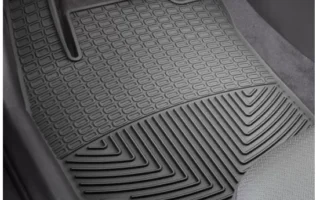Introduction to Window Glazing Putty
Glazing compound is a putty used to assemble older window sashes. By sealing the space between the glass and the sash, this compound can increase the energy efficiency of older windows.
Types of Window Glazing Putty
There are several different types of window glazing putty. Traditional oil-based putty is a common choice for its durability and ease of use. It requires some time to set and harden properly.
For those looking for a quicker option, acrylic or latex-based putties are available. These dry faster than oil-based putties but may have a different longevity.
Epoxy putty is another alternative that offers excellent adhesion and resistance to weathering. However, due to its quick setting time, it can be more challenging to work with.
Each type of window glazing putty has unique characteristics and benefits, so it’s essential to consider your specific needs before selecting.

Benefits of Using Window Glazing Putty
The benefits of window glazing putty are clear. It helps create a strong seal between the glass and the frame, preventing air or water leaks that could lead to drafts or damage.
An advantage of using window glazing putty is its durability. Once correctly applied and dried, it forms a solid bond that can withstand weather conditions without cracking or deteriorating quickly.
Window glazing putty is easy to work with and cost-effective compared to other sealing options. It can be applied by DIY enthusiasts with minimal tools required, making it an accessible solution for anyone looking to maintain or repair their windows.
The benefits of using window glazing putty extend beyond aesthetics—they contribute to better insulation, longevity, and affordability for your windows.
How to Apply Window Glazing Putty
When applying window glazing putty, there are a few key steps to follow to ensure a successful outcome.
The frame of the window should be prepared first. Make sure it’s clean and free of any old putty or debris. Next, knead a small amount of putty until it’s soft and pliable.
Press the putty into the window pane’s groove firmly but not too hard using your fingers or a putty knife. Smooth out any excess putty using a wet finger for a clean finish.
Once you’ve applied the putty, allow it to dry completely before painting over it if needed. This will help ensure your window is properly sealed and protected from drafts and moisture.
Common Mistakes When Using Window Glazing Putty and How to Avoid Them

If you are not careful when using window glazing putty, some common mistakes can quickly occur. One of the most frequent errors is applying too much putty at a time, leading to messy and uneven results. To avoid this, start with small amounts and gradually build up layers as needed.
It’s also crucial to pay attention to drying times. Rushing this process may cause cracks or shrinkage later on. Patience is vital when working with window glazing putty for a professional finish that lasts.
Alternative Options for Window Glazing
If you are looking for alternatives to traditional window glazing putty, a few options are available on the market. One popular alternative is using silicone sealant or caulk instead of putty. This can be a quicker and easier method for sealing windows, but it may provide a different level of durability than traditional putty.
Another option is using removable glazing tape, which is convenient for temporary fixes or small repairs. However, this method may not be as long-lasting as other methods and might need more frequent maintenance.
While there are alternative options for window glazing, traditional putty remains a reliable choice for many homeowners due to its durability and effectiveness in providing a solid seal around windows. When deciding on the best method for your window repair projects, it’s essential to consider your specific needs and preferences.




